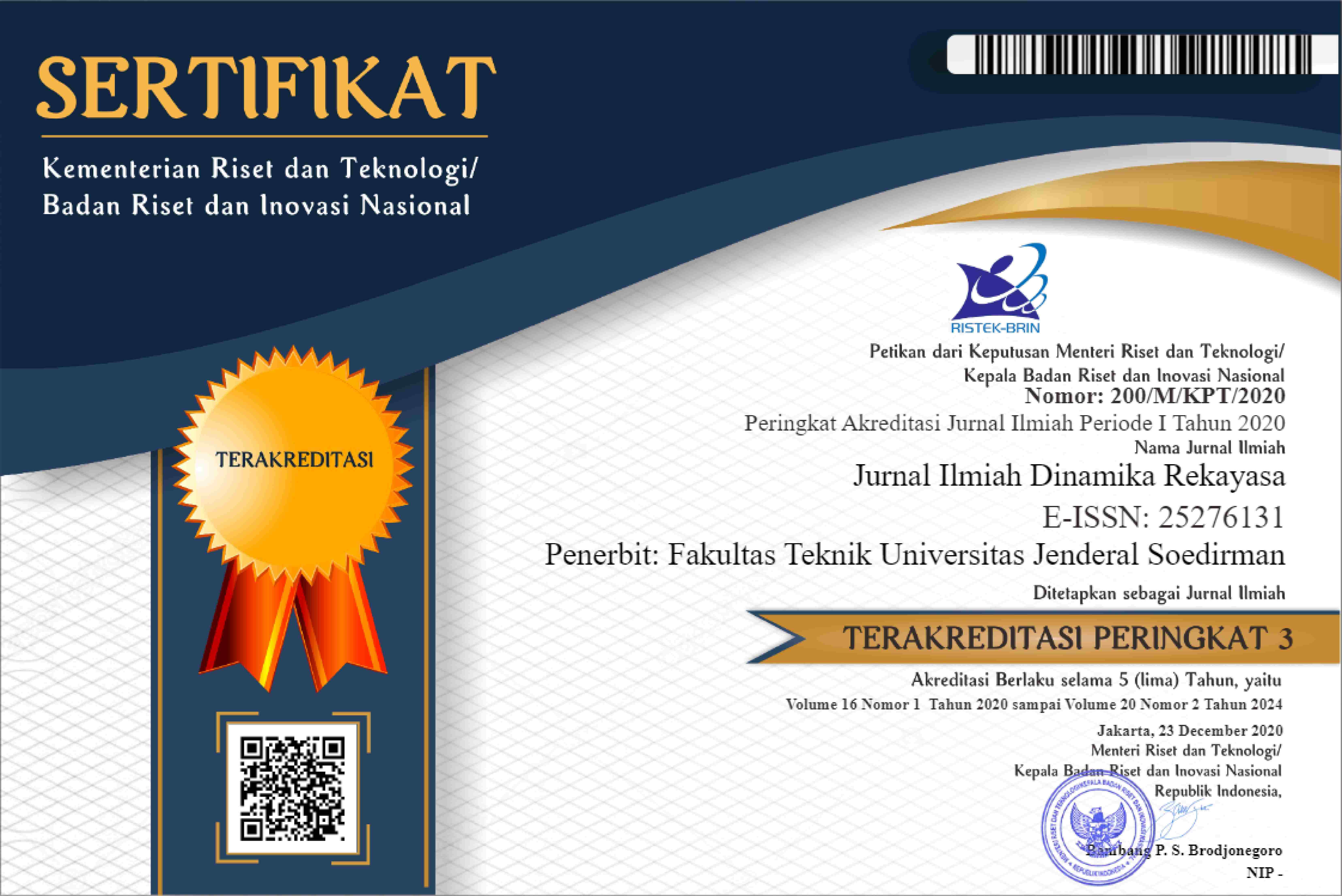Real-Time Traffic Sign Recognition Using Integrated Camera Sensors and Yolov8 Algorithm
DOI:
https://doi.org/10.20884/1.dinarek.2024.20.2.91Abstract
Traffic signs are an important element in maintaining smoothness and safety on the road. However, there are still many drivers who violate them, causing various negative impacts. Traffic Sign Recognition (TSR) is a technology that has the ability to detect and identify various types of traffic signs by utilizing artificial intelligence in the computer vision domain. TSR has been applied in various vehicle applications, such as Advance Driver Assistance System (ADAS) and Autonomous Driving System (ADS). This system is made by integrating camera sensors with the YOLOv8 algorithm which has high accuracy and fast data processing. The data used were 2093 images and annotated through Roboflow. Then the data is trained through Google Collaboratory with a mAP evaluation result of 95.5% which shows that the system can detect objects accurately. The level of precision and success of the model in detecting objects is 93.5% and the success is 93.3%. The results of system testing can use images, videos, and through cameras in real time.
Downloads
References
A. Soimun, A. Leliana, E. I. Ulmi, D. H. Ziantono, and H. Widyastuti, “Analisis Pemahaman Pelajar Pada Rambu Lalu Lintas,” J. Teknol. Transp. dan Logistik, vol. 1, no. 2, pp. 91–100, 2020.
Y. Sinha, B. Hadassa, G. Krishna, and C. V. Ravi Kumar, “Traffic sign recognition using convolutional neural networks,” Int. J. Electr. Eng. Technol., vol. 11, no. 3, pp. 210–217, 2020, doi: 10.14710/jtsiskom.2021.13959.
B. Eshete and U. States, “Autonomous Vehicle Risk Management Profile for Traffic Sign Recognition Autonomous Vehicle Risk Management Profile for Traffic Sign Recognition By Christine Carlton and Birhanu Eshete Contributions from : Amanda Fischer , Stephanos Loizou , Animesh Sarkar ,” no. December, 2023, doi: 10.13140/RG.2.2.15330.91842.
C. Rahmad, I. F. Rahmah, and R. A. Asmara, “Deteksi dan Pengenalan Rambu Lalu Lintas di Indonesia Menggunakan RGBN dan Gabor,” Sentrinov, vol. 3, pp. 13–22, 2017.
Saputra B, Ilman M, Audina M, Jepri M, and Rosyani P, “Sistem Pengenalan Tanda Lalu Lintas MenggunakanAlgoritma YOLO,” J. Inov. dan Hum., vol. 1, no. 1, pp. 161–164, 2023.
M. Flores-Calero et al., “Traffic Sign Detection and Recognition Using YOLO Object Detection Algorithm: A Systematic Review,” Mathematics, vol. 12, no. 2, 2024, doi: 10.3390/math12020297.
C. Liu, S. Li, F. Chang, and Y. Wang, “Machine Vision Based Traffic Sign Detection Methods: Review, Analyses and Perspectives,” IEEE Access, vol. 7, pp. 86578–86596, 2019, doi: 10.1109/ACCESS.2019.2924947.
M. A. S. Sabilillah, “Aplikasi Pengenalan Rambu Lalu Lintas Menggunakan Augmented Reality Berbasis Android,” JATI (Jurnal Mhs. Tek. Inform., vol. 2, no. 2, pp. 212–216, 2018.
A. H. S. P. M.Pd, “Ensiklopedia Traffic Signs; Solusi Cerdas Memperkenalkan Road Safety Culture Pada Anak Sekolah,” J. PENA Penelit. dan Penal., vol. 8, no. 2, pp. 688–700, 2021, doi: 10.26618/jp.v8i2.9065.
M. A. Surya et al., “Sistem Keamanan Ruangan Dengan Human DetectionMenggunakan Sensor Kamera Berbasis Deep Learning,” Teknoinfo, vol. 18, no. 1, pp. 182–192, 2024, [Online]. Available: https://ejurnal.teknokrat.ac.id/index.php/teknoinfo/index
R. Avanzato, F. Beritelli, A. Lombardo, and C. Ricci, “Lung-DT: An AI-Powered Digital Twin Framework for Thoracic Health Monitoring and Diagnosis,” Sensors, vol. 24, no. 3, 2024, doi: 10.3390/s24030958.
L. Rahma, H. Syaputra, A. H. Mirza, and S. D. Purnamasari, “Objek Deteksi Makanan Khas Palembang Menggunakan Algoritma YOLO (You Only Look Once),” J. Nas. Ilmu Komput., vol. 2, no. 3, pp. 213–232, 2021, doi: 10.47747/jurnalnik.v2i3.534.
Y. Yanto, F. Aziz, and I. Irmawati, “Yolo-V8 Peningkatan Algoritma Untuk Deteksi Pemakaian Masker Wajah,” JATI (Jurnal Mhs. Tek. Inform., vol. 7, no. 3, pp. 1437–1444, 2023, doi: 10.36040/jati.v7i3.7047.
A. Mashudi, F. Rofii, and M. Mukhsim, “Sistem Kamera Cerdas Untuk Deteksi Pelanggaran Marka Jalan,” JASEE J. Appl. Sci. Electr. Eng., vol. 1, no. 01, pp. 15–25, 2020, doi: 10.31328/jasee.v1i01.4.
N. J. Hayati, D. Singasatia, and M. R. Muttaqin, “Object Tracking Menggunakan Algoritma You Only Look Once (YOLO)v8 untuk Menghitung Kendaraan,” Komputa J. Ilm. Komput. dan Inform., vol. 12, no. 2, pp. 91–99, 2023, doi: 10.34010/komputa.v12i2.10654.
A. ANHAR and R. A. PUTRA, “Perancangan dan Implementasi Self-Checkout System pada Toko Ritel menggunakan Convolutional Neural Network (CNN),” ELKOMIKA J. Tek. Energi Elektr. Tek. Telekomun. Tek. Elektron., vol. 11, no. 2, p. 466, 2023, doi: 10.26760/elkomika.v11i2.466.
T. A. A. H. Kusuma, K. Usman, and S. Saidah, “People Counting for Public Transportations Using You Only Look Once Method,” J. Tek. Inform., vol. 2, no. 1, pp. 57–66, 2021, doi: 10.20884/1.jutif.2021.2.2.77.





